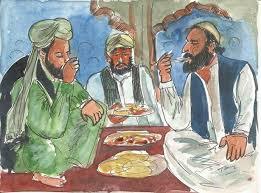Origin and History of Ice Cream
Hot summers end extreme heatwaves always pushed people to
find some salvation and way to cool themselves. This quest enabled the creation of
many innovative technical devices and traditions, but only one item of them all
managed to capture our imagination and wishes, giving everyone time to enjoy
their moments in the sun and cool themselves like never before. This is a story
of ice cream.
History of Ice Cream
History of ice creams followed the rise of the modern human
civilizations. Its incredible appeal and high manufacturing price fueled the
minds of countless inventors, who trough centuries of trouble finally enabled
the creation of the modern-day ice cream industry. Find out more about ice
cream history, timeline, and popular types here.
Facts about Ice Cream
If you ever wanted to find out more about ice cream here you
will find not only the most interesting facts but also information about most
popular brands, effects of its use and much more.
Making Ice Cream
If you ever wanted to make your own ice cream or you are
just interested in that process, here is the perfect starting point which has
all the detailed information about ice cream ingredients and recipes.
Brief History of Ice Cream
 First ice creams appeared in ancient Persia, some 2500 years
ago, and in those early times, they were all based on the sweetened water that
was iced, ground into little pieces and then decorated with various tasting
toppings and fruits. This tradition of ice cream production slowly reached
Greek and Roman empires, where ice creams were welcomed with open hands and
used liberally by Roman nobility and royalty who had necessary money to fund
the very expensive process of production. Sadly, after the fall of the Roman
Empire, organized ice transport from mountains to the cities below stopped, and
ice cream continued to be an even more expensive product. Little changed in the
1000 years following the fall of Rome, and only after Europe started
exiting Dark Ages did ice cream managed to resurface in Renaissance Italy.
First ice creams appeared in ancient Persia, some 2500 years
ago, and in those early times, they were all based on the sweetened water that
was iced, ground into little pieces and then decorated with various tasting
toppings and fruits. This tradition of ice cream production slowly reached
Greek and Roman empires, where ice creams were welcomed with open hands and
used liberally by Roman nobility and royalty who had necessary money to fund
the very expensive process of production. Sadly, after the fall of the Roman
Empire, organized ice transport from mountains to the cities below stopped, and
ice cream continued to be an even more expensive product. Little changed in the
1000 years following the fall of Rome, and only after Europe started
exiting Dark Ages did ice cream managed to resurface in Renaissance Italy.
During 13th and 14th century, Italy was centre of the trade
with the Middle East and Asia, and their contact with new and innovative
recipes of ice cream enabled this summertime treat to slowly spread across
entire Europe. This expansion of ice cream was not an easy one, and it happened
only after Italian noblewoman Catherine de'Medici went to France to marry Duke
de Orleans (future king of France) in 1533. There she introduced nobility of
continental Europe with the wonders of the east – eating utensils, high heeled
shoes and of course, ice cream. With nobility fueling its production,
innovators, technicians and cooks all put their best efforts into developing
the rise of ice cream popularity and availability across the world. North
American street vendors started selling ice cream only a few decades after France
and England, and the industrial revolution slowly but surely started working on
elevating problems of continuous refrigeration.
A solution to that problem came only in 1926 when continuous
refrigeration finally became reality with electrical freezers. This enabled
industrial manufacturers to start producing very large quantities of this
frozen treat, which slashed ice creams price to the acceptable levels for
everyone. Large popularity of ice cream in the United States (especially during
prohibition and market crash of the 1930s) did not shift to Europe until the
start of World War II. After WW2, the ice cream industry received a massive
expansion, enabling creation of countless ice cream flavours, artificial
ingredients and accessible price. Today, the ice cream industry earns dozens of
billions of dollars each year, with the United States being the largest consumer of
this phenomenal summertime treat.
RECIPE OF THE DAY
ICE CREAM
INGREDIENT
·
1 cup milk of choice (I’ve used
almond, half n half low fat and coconut milk- just use your fave and keep in
mind higher fat content will make for a creamier consistency and fat is not
bad. I used full-fat coconut milk (I had a can opened that needed to
be used) in today’s recipe.
·
2 cups
frozen strawberries
·
optional: 2+ teaspoons sweetener of choice
(I’ve found some brands of strawberries need more sweetener, so just give it a taste.)
·
optional: graham crackers for garnish
METHOD
1. Add
ingredients to your blender according to the recommended order. (I used
my Nutri-ninja for this, so it loads backwards.)
2. Blend
until ice cream consistency is achieved. You may need to stop your
blender to scrape sides. Add more liquid or frozen strawberries as
needed.
3. Top
with optional graham crackers and serve!
INSTAGRAM- https://www.instagram.com/_bhojnam/






























